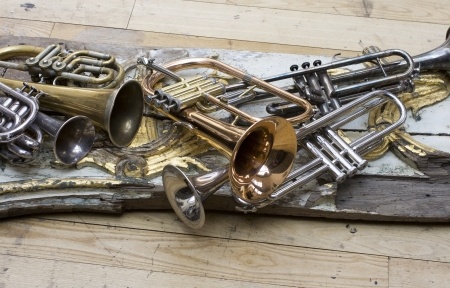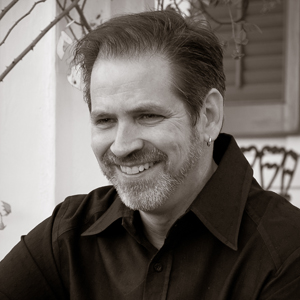One of the most common methods of networking for musicians is to go to jam sessions. These gatherings are often not what they appear, and often caution is advised…
The Beginnings
In the past, jam sessions often took place “after hours” in bars and clubs where there were more conventional shows during the “prime time” hours. The musicians would play and exchange new ideas late into the night. It is arguable that many of the innovations in jazz, blues and other styles were worked out and developed during these free-form explorations. Musicians tried new things, worked on new songs and made connections, often leading to new collaborations. Usually the musicians were invited to these gatherings, or at least they knew each other in advance. Sometimes new musicians would join in, but it was by no means a “cattle call” affair.
However, things have changed a lot since those early days, and because many social interactions have a way of going “off the tracks,” jam sessions are no longer what they once were.
Today
Most jam sessions are now held during the earlier hours on certain designated evenings. The bar owner will often attempt this as a way of bringing in clientele. Often local musicians of various skill levels will show up, accompanied by their friends. This creates a temporary rise in alcohol sales that extends the life of the session for a while.
Usually a “house band” is brought in to provide accompaniment to the guest musicians who sit in. Sometimes this group is paid, other times they are coerced into some kind of cover-charge sharing scheme, which rarely pays well enough to make the gig appealing. This house band is there to keep things moving, and to prevent total chaos from breaking out. They also may play some material to keep the audience entertained, especially if there aren’t a lot of guest musicians.
Protocol
There is usually a host, who invites players to the stage to sit in. At some sessions, there is a long line of players waiting to take the stage. Once the leader has picked out the guest musicians, the negotiation of what material will be played takes place.
The song will then commence, and it is expected that all the guests be given an opportunity to solo, thus demonstrating their prowess and becoming part of the “scene.” In the ideal situation, everybody gets a turn, new contacts are made and a good time is had by all.
The Cast
Because jam sessions are a social gathering, and because humans instinctively start establishing a “pecking order,” certain types of people seem to make an appearance over and over:
1. The Guy that Knows All the Tunes: This may be an older player, attempting to establish or maintain status. Younger players: beware. This person will find a way to let you know how you don’t have enough material and experience to be valid. Heaven help you should you pull out your “Real Book” or other charts; this constitutes an open admission of failure. Somehow, they were born with thousands of standards in their head. Of course, it is good to know tunes and the history; but the issue here is status. If you do call a tune, they will let you know how silly and trite your selection is.
2. The VIbers: These are “important” players who will refuse to give you the time-of-day in order to let you know how unwelcome you are at the session, despite the purported “open” nature of the gig. The more you try to make small talk or interact, the colder and more aloof they will become.
3. The Chord Substitution Snob: I flinch at this, because as a young piano player, I fell into the trap of trying to force what I thought were the “hip” changes onto somebody unprepared for them. Often this is supposed to “school” the less experienced on the nuances of harmony, and I have learned many alternate changes by listening to others. However, it can also be used as a weapon to attempt to throw others off-track for ego purposes.
4. The Historian: Similar to the above chord substitution trick; this is a person who is hip to the “real” chords from the recording, and will become annoyed if anyone plays them otherwise. The worst offense: to play the incorrect changes drawn from the original Real Book. These well-educated musicians will usually know who played on every record from the Blue Note era, and will dismiss anyone who doesn’t engage them in an argument.
5. The Guy Who Won’t Stop Playing: Here we have a musician who won’t share the spotlight. Usually they arrive, unpack their instrument and begin playing along, often “drifting” toward the stage, uninvited. If they play a horn, they may linger on the stage for the rest of the evening, noodling along. Usually, the more relentless they are, the lower the quality of the playing. What’s happening here is that they are counting on how awkward it would be for somebody to tell them to stop. Drunkenness is often part of this syndrome.
6. The Virtuoso: This person will call a fiendishly difficult tune, at an insane tempo, all for the purposes of leaving everybody in the dust. At some sessions, almost everybody has dropped out, and they play on, unfazed. Sometimes these musicians come in pairs or groups and take over the stage. The point here is that they are way better than anyone else, and can’t lower themselves to play with others.
7. The Teacher: Many years ago I witnessed a seasoned player walk over and shut a young guitarist’s fake book while the song was in progress. He then pointed to his ears as if to say “listen.” Besides being amazingly condescending, it was downright cruel. Perhaps this was intended as a teaching tool, but it came across as arrogant. I might even consider doing this if it was my student, and they were in a combo rehearsal or a lesson; but not on stage in front of everybody…
8. Angry: Here a musician is so morally outraged at the mediocrity of the other musicians that he or she will start yelling and barking out commands during a song. This is because they have appointed themselves “keeper of the flame” and are defending the music from the amateurs who are ostensibly ruining it for everybody.
What to Do?
For me, the choice has long been not to go to jam sessions. Though I’m sure there are many civil gatherings, it does become tiresome to see the same movie play over and over, with new cast members assuming the key roles. The type of playing I am working on these days is not geared to impressing or “cutting” anymore, so it is difficult to want to go into the lion’s den. I also don’t want to get drawn into the fight for “pecking order.”
For my students and other young players, I recommend going in with a thick skin, expecting all the above tactics and characters. Perhaps you can make some new contacts; just be cautious!
Questions:
Have you ever had a bad experience at a jam session?
Have you ever unconsciously played any of the above characters? (I’m afraid I have…)
Has a jam session helped your career?


